Furlough Letter Template for Employers and Employees
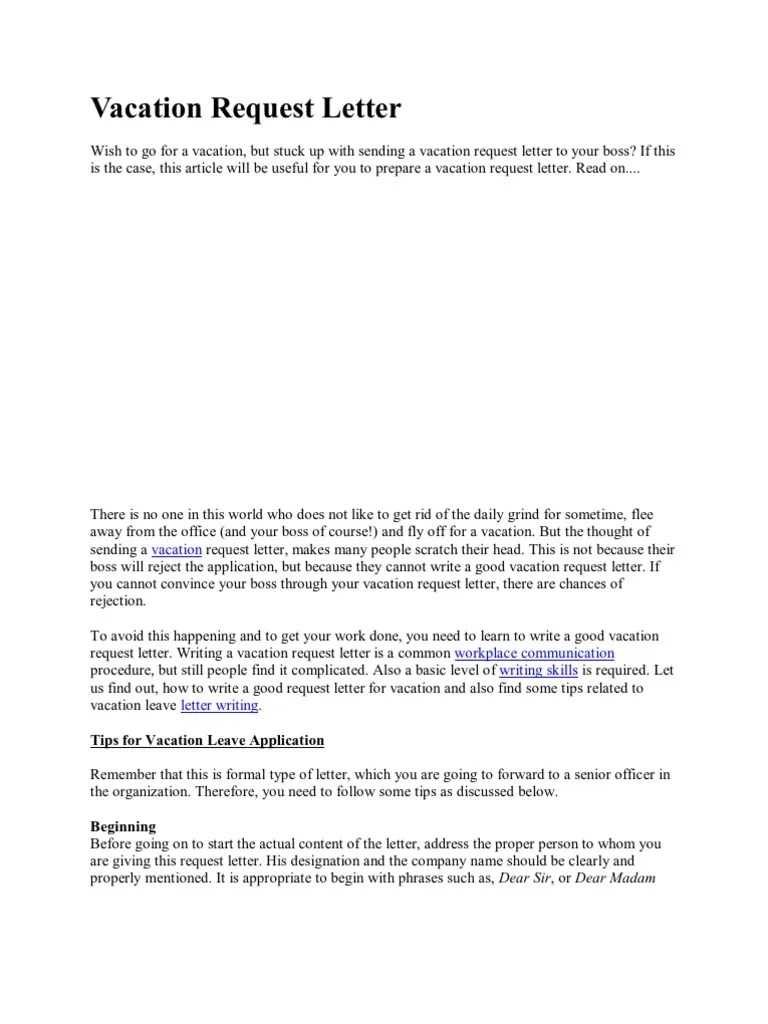
htmlEdit
In certain situations, employers may need to temporarily release staff from their duties due to various external or internal factors. It is crucial to approach these moments with clear and formal communication to ensure both parties understand the terms and expectations during this period. Proper documentation helps maintain transparency and prevents potential misunderstandings.
Such a document should outline key details such as duration, the employee’s rights during the time away, and any necessary instructions. Crafting this communication effectively can support smooth operations and foster goodwill between the employer and the employee. Clear terms and a professional tone can ease any uncertainties and create a mutual understanding.
For those tasked with creating this form of communication, a structured approach can make the process more efficient. Providing clear guidance on expectations, payment conditions, and return-to-work procedures will help ensure clarity for everyone involved.
htmlEdit
Creating an Effective Furlough Notice
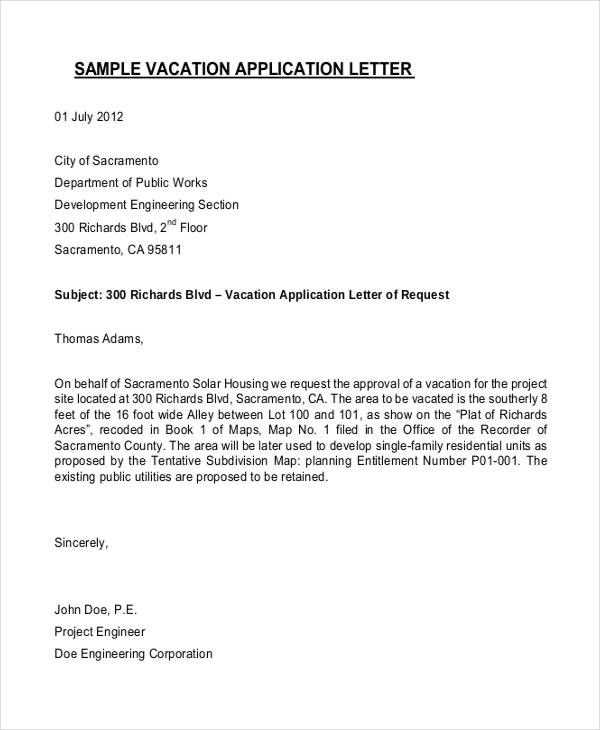
When informing employees about a temporary pause in their work duties, it’s essential to provide clear and concise communication. This ensures that employees are fully aware of the details, and it helps maintain trust between the employer and the workforce. Crafting this notice with precision can mitigate confusion and foster a positive understanding during uncertain times.
Key Elements to Include
- Duration of the absence – Clearly state the start and end date, if possible, or indicate if it is indefinite.
- Employee rights – Outline any compensation, benefits, or support offered during the absence.
- Return instructions – Provide clear instructions on how the employee should proceed when returning to work.
- Contact details – Ensure employees know how to reach the company for further clarification or concerns.
Tone and Language
The tone of the notice should remain professional, respectful, and empathetic. Acknowledging the difficulty of the situation can help maintain morale. At the same time, ensure that the language remains direct and easy to understand, with no room for misinterpretation.
htmlEdit
Essential Components to Include in the Document
To ensure clarity and avoid confusion, it is important to structure this communication carefully. The document should be comprehensive yet concise, offering all the necessary details while being easy to read. Including specific elements can help both parties navigate the temporary work arrangement without misunderstandings.
Important Information to Include
- Reason for the Absence – Explain the situation that led to the decision, providing context without unnecessary details.
- Duration – Clearly outline how long the employee is expected to be away from their duties, or indicate if the timeline is uncertain.
- Compensation and Benefits – Describe any financial support, such as salary adjustments or benefits, that will be provided during this period.
- Return Process – Specify any necessary steps or expectations upon the employee’s return to work, including any required documentation or re-engagement instructions.
Clarity and Precision
It is crucial that the language used in the document is precise and free from ambiguity. Avoid vague terms and focus on clear, actionable instructions. This will help prevent confusion and ensure that the employee understands the terms of their temporary absence with ease.
htmlEdit
Communicating the Length of the Leave
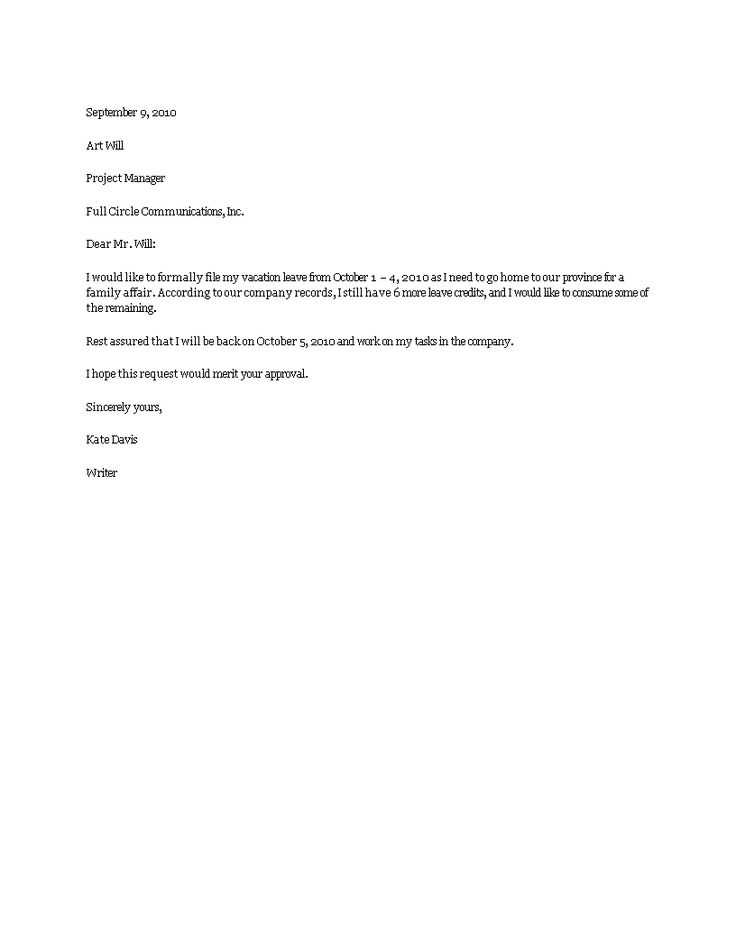
Clearly outlining the duration of time away from work is critical for both the employer and the employee. It ensures that both parties are aligned on expectations and helps prevent any confusion about the return process. Providing this information early on can give the employee a sense of clarity and security, knowing exactly how long they are expected to be away.
Specifying the Timeframe
- Exact Dates – If possible, specify a clear start and end date for the leave. This gives the employee a definitive period of absence.
- Indefinite Duration – If the leave is uncertain, explain the reason and provide guidance on when further updates will be given.
- Review Period – Indicate if there will be a review of the situation after a specific period to assess the employee’s return or continuation.
Providing Flexibility and Updates
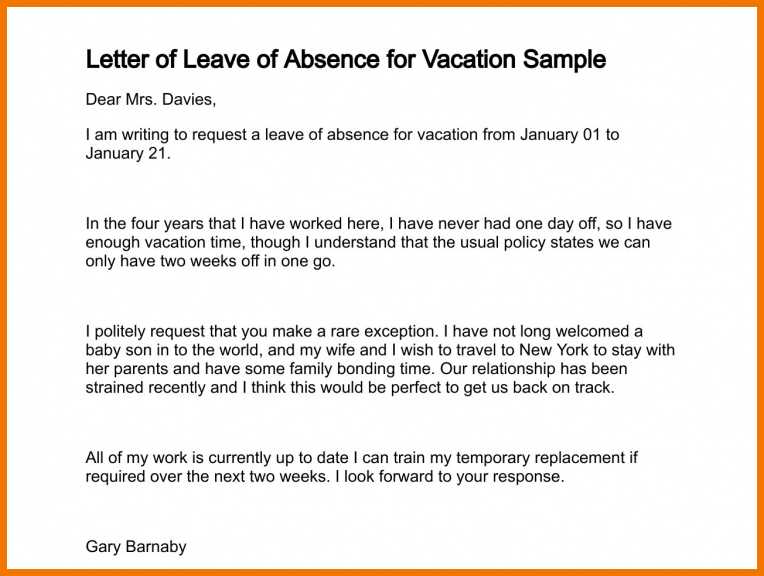
While clear dates are important, it is also helpful to offer flexibility where possible. If the situation changes, ensure there is a process in place to notify the employee promptly. This helps maintain transparency and ensures both parties are informed of any alterations to the original plan.
htmlEdit
Clarifying Employee Rights During Time Off
When employees take time off from their regular duties, it’s crucial to make their rights and entitlements clear. This helps maintain trust between the employer and the staff, ensuring that both parties understand their obligations and expectations. Proper communication regarding benefits, compensation, and any adjustments will minimize confusion and ensure fair treatment.
Key Employee Rights to Address
- Compensation – Outline whether the employee will continue to receive pay during the time away and under what conditions.
- Healthcare and Benefits – Specify any continuation of benefits, such as health insurance or retirement contributions, during the absence.
- Job Security – Clarify the employee’s position upon their return and whether there are any conditions that may affect their job status.
- Leave Extensions – Indicate the process for requesting additional time off if the situation requires it.
Maintaining Transparency
It’s important to ensure that the employee fully understands the terms and conditions related to their time away. Clear communication about their rights helps prevent any misunderstanding or frustration, making the entire process smoother and more professional for both parties involved.
htmlCopyEdit
Legal Considerations for Drafting a Notice
When creating formal communication regarding time away from work, it is essential to consider the legal framework surrounding such actions. Ensuring compliance with labor laws, employment contracts, and relevant regulations helps avoid potential legal issues. A well-drafted notice not only serves as a clear guideline for both parties but also protects the employer from legal disputes.
Key Legal Elements to Address
- Employment Contracts – Review the employee’s contract to ensure that the terms align with company policies and legal requirements for time off.
- Local Labor Laws – Ensure the notice complies with national and local labor laws regarding employee rights during u
htmlEditMaintaining a Professional and Clear Tone
Effective communication in a professional context is essential, especially when addressing sensitive matters such as temporary absences. A professional and clear tone helps ensure that the message is well-received and understood by the recipient. It is important to strike a balance between empathy and formality while avoiding ambiguity or overly casual language.
Professional Tone Clear Tone Use formal language and avoid slang or overly personal phrases. Keep the language simple and direct to avoid confusion. Show respect and understanding of the employee’s situation. Provide clear, actionable information that is easy to follow. Maintain a positive and supportive message. State key points concisely, focusing on important details. By maintaining both professionalism and clarity, the message can convey necessary information effectively, reducing potential misunderstandings and promoting a respectful and transparent relationship between employer and employee.
htmlEdit
Final Review Before Sending the Document
Before finalizing any formal communication regarding a temporary absence, it’s crucial to carefully review the entire content. This ensures that all necessary information is included and that the message is clear and accurate. Taking time for a final check helps avoid potential errors or misunderstandings and ensures the message is professional and appropriately crafted.
Things to Confirm
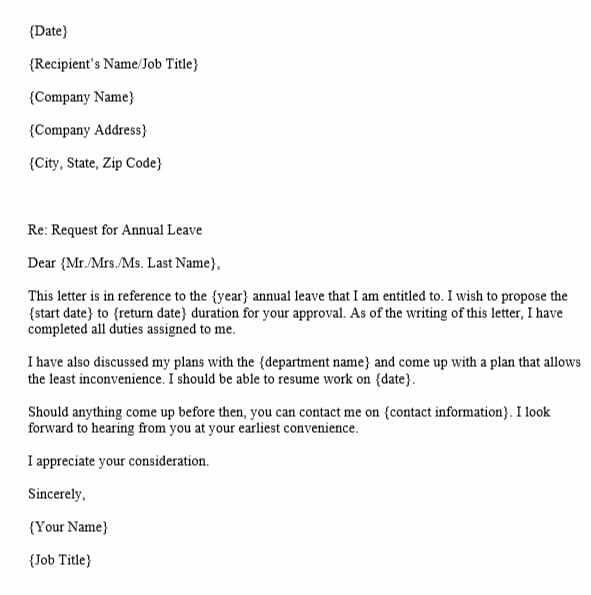
- Correctness of Dates – Verify that the dates for the leave are correct and that they are clearly specified in the document.
- Clarity of Instructions – Make sure that any actions required from the employee, if applicable, are clearly outlined and easy to understand.
- Legal Considerations – Ensure that the document complies with relevant laws and addresses any benefits or compensation related to the absence.
- Grammar and Style – Review the text for any grammatical issues and ensure the tone remains formal and respectful throughout.
Final Steps for a Professional Touch
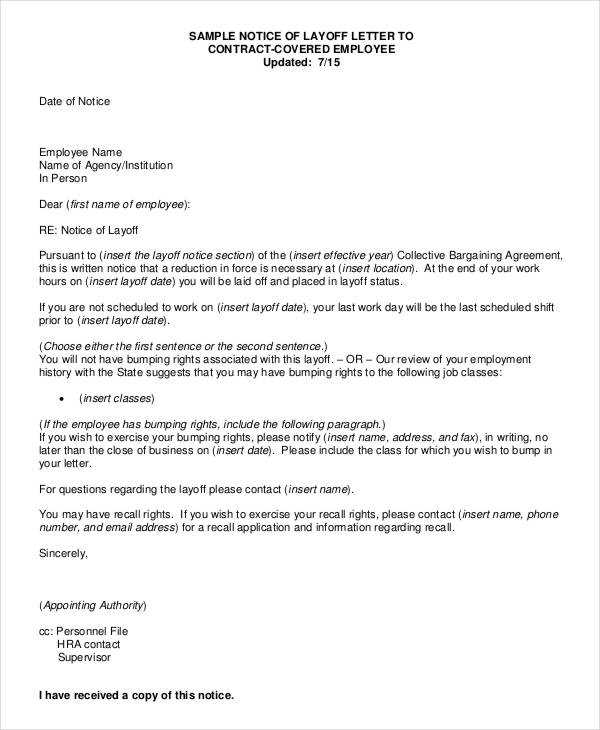
Before sending, check that the language is concise, free of ambiguity, and conveys the intended message in a clear and respectful manner. The last review ensures that the document maintains a professional tone and avoids any miscommunication, helping to foster positive relationships with employees during temporary absences.